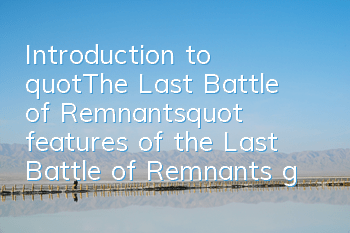From street gangsters to assassin masters, this series of articles will introduce their legendary stories one by one.*Note: The order of the Assassin's Creed series, I basically follow the order of release (see the table below), because I do not recommend playing too deliberately in the chronological order of the plot; but when you finish reading the article carefully, you will naturally know the chronological order.
The Assassin's Creed series can currently be divided into three major stages, and "Origin" can be regarded as a new beginning (after listing this table, I can't help but miss the "Age of Empires" series, an enlightened work that learned about world history when I was young) Because there is too much content, this article first talks about the first part - the Middle Ages - Renaissance (Part 1). The two main characters in this part: Altay and Egio, Ubisoft tells their legendary lives through multiple games. At present, only these two assassin masters can receive such treatment. This article first talks about their growth path when they were young, and in the future (the next) chapter, let’s review the heroic years of these two great mentors together. This series of articles is divided into the following parts: (I) Medieval - Renaissance (Part 1): 1st generation, Altaïr chronicle, blood ties, bloodline, 2nd generation, Exploration, Attachment: Movies, comics, novels, chronology, ancestors/family pictures (II) Medieval - Renaissance (Part 2): Brotherhood, Power, Revelation, Embers (II) Americas (Part 1): 3rd generation, Liberation (IV) Americas (Part 2): 4th generation, Rebellion (V) Modern Europe: The Great Revolution, The Heroes (VI) Chronicles: China, India, Russia (VII) Mythological Trilogy: Origin, Odyssey, Valhalla
There are a large number of related materials such as characters, pictures and other related materials excerpted from "Assassin's Creed Chinese Wiki". Thanks to the Wiki maintenance staff for their efforts. Friends who want to know more are welcome to check it out. Preface: Why do you need to talk about history? Some people say that they like "Assassin's Creed" because of the protagonist's handsome shape and stinging (tu) action, flying over the eaves and walls, and mercenary; or because of the protagonist's glorious life, they can't help but sigh and feel a lot of emotion; or because of the mysterious adventures again and again, it is like being in the middle and immersive; or they directly regard it as a "tourism simulator", without going out to travel around the world's historical relics, and enjoying the ancient exotic style, as if they travel through time and space; or collecting and controlling players' strong satisfaction with collecting various collections... and we should not ignore the elements that permeate the entire series. "What is history? History is the nail I use to hang novels." - Dumas In fact, many of the film and television dramas, novels, games and other works that we are familiar with are closely related to historical figures and historical stories. Although putting aside these details does not affect the main plot of these works; understanding the historical background will give you a deeper understanding of the works, and it is also a very interesting thing. "How many things happen in ancient and modern times are all laughing at." I hope that by savoring these works, you can find happiness.
Is modern plot and worldview that important? I often listen to people hug youThe complaint said: "The modern plot of Assassin's Creed is really boring. When the plot reaches modern times, you want to fast forward. Ubisoft doesn't know how to make a skip option." It is true that the modern plot of each work is very scattered, especially for players who have never played the previous works. It is indeed inexplicable to watch a certain part of the modern plot alone, and it will feel boring if you spend too many times. This article will briefly summarize and sort out the modern plot of each work one by one, so that everyone can understand it by stringing the plot together. The pioneer, the holy artifact of Eden, the origin of human beings... The unique worldview has endless fun you can explore. At least, the Assassin Organization and the Templar have been in love and fighting each other for thousands of years. We must understand why, right? I believe that patience will open the door to a new world for you.
The series iconic elements that must be mentioned: Xiujian "Xujian has been our loyal partner for many years. Some people will even say that Xiujian defines us-they are not completely wrong. Many of our success would have been impossible without it." - Altaïr, page 13
As the iconic weapon of the Assassin organization, Hidden Blade is both an assassin weapon and can be used in frontal combat. This is the most commonly used weapon for Assassins, with a variety of usage and upgrade options. The Shoujian contains a retractable blade. When used with the wrist armor, the Shoujian can extend and retract without attracting attention, making it an excellent weapon for assassination.
The design of the sneak sword in the secret letter The earliest record of the assassin using the sneak sword was in 465 BC. The Persian assassin Darius assassinated the Persian King Xerxes I, and his fingers were intact. In Assassin's Creed: Origins, Bayek lacks experience in using this weapon and his indifference to using the cuff sword, resulting in his ring finger being cut off by the cuff sword. After that, in order to avoid being hindered by the ring finger (life and death are often between the front lines, and there is no need to be any mistake), the assassins gradually joined the custom of actively cutting off the ring finger when joining the society, until Altaïr of the Levant Assassin Brotherhood improved the sword.
Improvement of Xiujian "This device has begun to appear outdated, so I have been studying improvements, one of which is to make it work normally without the need to remove the user's fingers." - Altaïr, page 13
Altayne, who is doing research. Initially, the user of the hive sword needed to cut off the ring finger, which was not only a need for the blade to stretch and retract, but also a commitment from the assassin to his creed. But many Levantine assassins will be easily identified because of their missing fingers. The craftsmanship of the Xiujian was improved by Altaïr in the 13th century. The improved Xiujian sword art was transferred to the bottom of the middle finger, and the ring finger would no longer block the blade. This not only makes the assassins unable to cut their fingers, but also increases their secretness. Nevertheless, similar traditions have not been forgotten. Renaissance Italian assassins still need to brand their left ring finger in the ceremony of joining as their commitment and dedication to Assassin's Creed.
Da Vinci told Egio that you don't have to cut your fingers.Regarding the controversy between players, whether the Xingjian Reincarnator is Altaïr or Da Vinci, these two are not contradictory. While studying the Golden Apple of Eden, Altayne transformed and upgraded the Xiujian, and the specific matters were written in his secret letter and put them into practice. During Egio's journey, he kept searching for Altaïr's secret letters, and then found them and handed them to Da Vinci. So, Da Vinci made several upgrades to Egio's sneak sword through the craftsmanship recorded in the decryption letter and his unparalleled scientific talent. (This is how science is. It improves and innovates based on previous research. As for the most controversial issue of finger cutting, Italian assassins have no need to cut their fingers anymore. Leonardo da Vinci just saw the relevant records of Altaïr's secret letter when he was cultivating his sleeve sword, and deliberately scared Egio. Who said that the technical otakus would not joke? Hehe)
The sleeve sword without breaking the finger; expanding (middle) and shrinking (right) Al's improvement of the function of the sleeve sword is not limited to the need for breaking the finger, but also includes the installation of a metal armor piece, double sleeve sword, poison sleeve sword, sleeve gun, etc. that can block the impact, which are recorded in the secret letter.
Metal armor synthesis method, with new assassination technology. (Confidential Letter Page 13)
Poisonous Sword. The injection tube in the blade must be made strictly according to the description here. The slightest deviation will affect the overall metal stress structure, making the blade fragile or even damaged. (Confidential Letter Page 21)
Sleeve gun design drawings and gunpowder formula. (Confidential Letter, page 28) Variants of Xiujian. Looking at the known human history, Xiujian is still the most flexible weapon in the hands of assassins. Many upgrades and variants of Xiujian have appeared around the world.
Hook Blade (appeared in: Revelation, Constantinople)
Blade (appeared in: short film "Embers", first used in Chinese Assassin Shaoyun)
Swivel Blade (appeared in: Assassin's Creed 3, United States)
The Phantom Blade (appeared in: "The Great Revolution", France)
Three-blade (appeared in: comic "Brahmin", used by India, Albaz Mir)
Modern Sword
Shaunt Snake (Shawn used it to knock down Templar member Isabel) Assassin Emblem Assassin Insignia of Assassin, although it will change slightly in different periods and countries, basically maintains the same shape and style. Each of its variants may also symbolize different factions of the Assassin organization. Interestingly, the Assassin’s emblem has some similarities with the Freemason’s emblem (square and compass). Through the ending of "Assassin's Creed: Origin", we can see that the initial inspiration for the Assassin's emblem came from the mark left by an eagle skull thrown by Bayek on the beach.
In fact, a long time ago, some players discovered that the Assassin's Emblem is very close to the Eagle Skull. Different Assassin's Emblem (Special Period) LevantBrotherhood of Assassin
(appeared in: Assassin's Creed 1) The Assassin's Emblem in Altaïr's Secret Letter
(appeared on: Page 23 of the secret letter of Altaïr in "Assassin's Creed 2") Italian Brotherhood of Assassins
(appeared in: Assassin's Creed 2) Mongolian Brotherhood of Assassins
(Appeared in: The statue of the underground temple in "Assassin's Creed 2". The producer probably did not recognize the four words "Qianlong Tongbao") Persian Brotherhood of Assassins
(appeared in: Statue of the Underground Temple of Assassin's Creed 2) Chinese Brotherhood of Assassin (Qin Dynasty)
(appeared in: statue of the underground sacred temple in "Assassin's Creed 2") Egyptian Brotherhood of Assassins
(appeared in: Underground Temple Statue of Assassin's Creed 2) Babylonian Brotherhood of Assassins
(appeared in: statue of the underground church of Assassin's Creed 2) Roman Brotherhood of Spurs
(appeared in: statue of the underground sacred temple in "Assassin's Creed 2") Spanish Brotherhood of Assassins
(appeared in: Assassin's Creed 2: Exploration) Ottoman Brotherhood of Assassins (Türkiye)
(appeared in: Assassin's Creed: Revelation) Colonial Brotherhood of Assassins (Massachusetts, USA)
(appeared in: Assassin's Creed 3) New Orleans Brotherhood of Assassins (Louisiana, USA)
(appeared in: Assassin's Creed: Liberation) The Brotherhood of Assassins in the West Indies of the Caribbean
(Appeared in: Assassin's Creed 4: Black Flag) Pirate Flag on Edward Kenway's Jackdaw
(appeared in: Assassin's Creed 4: Black Flag) French Brotherhood of Assassins
(appeared in: Assassin's Creed: The Revolution) The Brotherhood of Britain
(appeared in: "Assassin's Creed: The Heroes") Chinese Brotherhood of Assassins (Ming Dynasty)
(Appeared in: Shao Yun's necklace in the short film "Embers") Indian Brotherhood of Assassins
(appeared in: comic "Assassin's Creed: Brahmin") Russian Brotherhood of Assassins
(appeared in: comic "Assassin's Creed: Fall") Invisible (predecessor of the Brotherhood, Ptolemy's Egyptian period)
(appeared in: Assassin's Creed: Origin) Leap of Faith "They took the lead, and each brother jumped down from the top of the tower and landed safely on a pile of hay. They were like eagles, experiencing true freedom. I did not hesitate, and the feeling of falling was like flying, which was refreshing."
A move that you will definitely not forget after playing Assassin's Creed (do not imitate it in reality) (you won't play with the animated pictures, please gather and spray it gently) Leap of Faith is a stunt action that jumps down from the top of a building and lands safely on a haystack. And it is a necessary part of the membership of the Assassin Organization. In the game, there are some hay around the places that can perform the Leap of Faithand bird droppings, some with pigeons inhabiting there.
Classic Quotes
When other men blindly follow the truth, remember...Nothing is true. When other men are limited by morality or law, remember...Everything is permitted. When everyone is bound by law and morality, remember...Everything is permitted. We work in the dark, and serve the light. We are Assassins. We act in the dark, and fight for the light, we are assassins! (I will gradually put more classic quotes into the introduction of each character) Assassin's Creed 1 Altaïr
Year: 1191 AD, during the Third Crusade. At this time, the dynasty in China was: the Southern Song Dynasty.
The marking in the picture is the protagonist of Massiav’s location: Altaïbn-La Ahad. Location: Massiav (Head of Assassin Organization), Damascus, Aka, and Jerusalem. Today, Israel and Syria.
Altaïr Ibn-La'Ahad (1165-1257) was a Syrian assassin in the medieval period. From 1191 to his death, he served as the mentor of the Levant Assassin. Altaire received training as an assassin since she was a child and became an assassin master at the age of 25. In 1191, Almorin sent him to steal the Eden apple from Robert de Sabrey but failed and led the Templar to Massiaf, causing serious damage to the assassin's tissue. Therefore, Altay is demoted to the Assassin Newbie and begins a mission to find redemption. Altay's mission is to kill nine targets--at first he didn't know that these nine were all Templars. In the process of killing these nine people, Altaïr also indirectly liberated the kingdom from their hands. But as the investigation deepened, Altaïr discovered that there was something else in it. After successfully killing these nine people and the traitor of the Assassin Organization - the then mentor Almolin, Altaïr became the new mentor, leading the Assassin Organization to a new era. With the apple in his hand, Altaïr fundamentally changed the way the assassin organization acted, and the specific contents were recorded in his secret letters for reference by future generations. Altaïr led the assassin organization to contact the lower class and established the Assassin Guild all over the world. During his life, Altayne led the Assassin Organization to prosperity, defeated the Templars many times, and also stopped Genghis Khan's attack. Altay's deeds were still widely circulated in the Assassin's organization after his death, affecting EgioMany assassins including Audi Torre. His bloodline eventually reached Desmond Myers, an important modern assassin.
Maciav Fortress
Altayr returns to Masiaf
The Reality of Masiaf Castle
Three Principles of Assassin Organization The main content of the creed is the three most basic moral tenets, which ensure the success of the mission, the control of emotions and the safety of the fraternity. Don't hurt innocent people. One of the most important goals of the Assassin organization is world peace. Assassins believe that assassinating corrupt officials can bring real peace to the people. Killing innocent bystanders and civilians can lead to conflicts while destroying the reputation of the assassin organization. Hidden in the city "Let the people protect you and become a member of the crowd"-Almorin Secret yourself. The assassin's goal is to sneak into the target secretly and leave in the same concealment. In ancient times, assassins often used amazing assassinations to gain awe. The biggest benefit of hidden assassination is that for an ordinary person, the assassin seems to emerge from the air, kills the target, and suddenly disappears. If it was discovered before, not only will this feeling of transcendence and nature disappear, but the difficulty of assassination will also greatly increase. Never implicate the Brotherhood "Your actions cannot threaten us, whether directly or indirectly" - Almorin The individual actions must never bring danger to the whole. If an assassin fails and is captured or pursued, he must never reveal any information about the fraternity or sell its members.
Armorin and Altayer’s Q&A on Creed - What is the truth? - With the faith in our hearts, we see what the world really is, and hope that one day everyone can see it. -What is the world? - An illusion. We can choose to blindly follow like others, or we can choose to transcend. -What is transcendence? - Remember that everything is empty and everything is acceptable. Our creed does not give us freedom to act, but requires us to seek wisdom. -You now understand why the Templars are a threat, right? - We can remove hallucinations, and they use this to maintain their domination.
Assassin's Creed 1 Maria Thorp
Maria Thorpe (1161-1228) was an English nobleman living in the medieval times. She joined the Templar during the Third Crusade. After being abandoned by the Templars, she found her home in her original enemy Assassin organization.
When she was a child, Maria was a little rebellious and her behavior was no different from a boy. Because of this, her parents often punished her. Before the Third Eastern Expedition, her parents forced her to get married, but the marriage lasted only for more than a year. This shame, coupled with Mary's own yearning for glory, led her to leave England and join the crusaders on the Eastern Expedition. In that era, women rarely participated in battles, so Maria disguised herself as a man and mixed into the army.. She performed well in the army and ended up winning the appreciation of Robert de Sable, the leader of the Templar. Although Robert discovered Maria's true gender, he supported her and allowed her to stay with her as a personal assistant. Although Maria did not agree with some of Robert's views, she still respected him very much and was even willing to die for him.
In 1191, after all eight Templars were killed by the assassin Altaïr, Robert accurately guessed that he would be the next target of the assassin. Robert immediately set up a trap. He first announced in a high-profile manner that he would attend the funeral of the newly killed Regent of Jerusalem, but privately Robert knew that the assassins would definitely not miss this opportunity, so he let Mary dress up as he went to the funeral.
As Robert expected, Altay arrived at the funeral as scheduled and caught Maria, when he realized that the man was not real Robert. Maria tells Altaïr that Robert has gone to Arsuf and is preparing to unite the Sarasen and the Crusaders to siege Masyaf. Because of Altaïr's multiple assassinations, the assassin organization became the common enemy of both sides. Unexpectedly, Altaïr did not kill Maria like he did to kill others, but instead warned her not to follow. But Maria arrogantly said that she didn't need it because Altay was already a step too late and it was impossible for him to stop Robert.
Maria later became Altaïr's wife. For details, please refer to "Assassin's Creed: Blood" and "Assassin's Creed: Revelation".
Portrait of Mary in Altaïr's Letter Page 25 Assassin's Creed 1 Malik Assef
Malik A-Sayf (1165 - 1228) was originally an assassin master who was equal to Altay, but because Altay was too frivolous when performing a mission in the Temple of Solomon, he lost his left arm and his younger brother. Although Malik successfully escaped from the Temple of Solomon with the fragments of Eden and returned to Masiaf, Malik, who lost his left arm, could no longer fight like before.
Later, Malik became the head of the liaison office of the Jerusalem Assassin Organization. At first Malik was extremely dissatisfied with Altay, but when Altay became calm and mature when he regained his identity, Malik gradually became respectful to him.
His original loyalty to Almorin was unbreakable and unquestionable, but out of trust in Altaire he went to the ruins underground in the Temple of Solomon, where he found Almorin's hidden identity and evidence of his betrayal of the organization. After Altayne killed Almorin to become the leader of the Assassin organization, Malik became his right-hand man. "I also discussed new assassination techniques with Malik: jumping from high altitude, assassinating from the edge, and assassinating from hiding places. These are very basic actions, but these changes are decisive." - Altaïr's secret letter, page 13. It can be seen that MalikIn the history of the development of the Assassin Organization, he has made his own unique contribution. Assassin's Creed 1 Abbas Sofian
Abbas Sofian (1166-1247) and Altayne are the descendants of the assassin. They were very close friends in childhood. However, after Altay told Abbas that his father Hamad Sofian betrayed the assassin organization because he could not resist torture (causing Altay's father: Omar Ibn-La Ahad to go to the autocracy calmly), and finally committed suicide and apologized, Abbas labeled Altay as a "liar", and his hatred for Altay arose for the rest of his life. Abbas did not have many scenes in the first generation. After failing to work in Altaïr's Temple, he returned to Massiaf. He was the one who was provoking trouble at the door. "Assassin's Creed: Revelation" records his grudges and entanglements with the elderly Altay.
Assassin's Creed 1 Altaïr's assassination target "Child, this is just the beginning. Here is a list with nine names and nine people who must die. They bring disasters, create wars, and their hegemony pollutes the holy land, causing the crusades to never end. You have to find them and kill them, and at the same time, you will also sow the seeds of peace, whether for the holy land or for yourself." After dealing with the traitor, Almorin gave Altaïr a chance to atone for his sins and allowed him to accept the task of "hunting the nine people" to make up for Altaïr's failure in the Temple of Solomon, his violation of the creed and his harm to the brotherhood. These nine people all have public identities to cover up, but in the secret they are actually secret members of the Templars.
The first assassination target: Tamir Target location: Damascus slum
Tamir is a cruel and ruthless black market businessman who conducts underground trading weapons in the largest black market in Damascus. When Altayr found him, he was committing an offense.
The words before Tamir's death made Altay feel that this task was not as simple as he was told. Almorin explained to Altay, hiding some of the intelligence was to make sure he didn't make mistakes (you know too much anyway). The second target of assassination: Ganier de Nablus (historical figure) Target location: Aka Slums
Garnier de Naplous (1147-1191) was the tenth chief of the Knights of the Hospital and an extremely domineering doctor. The patient suffered cruel abuse at his hands and was often regarded as a guinea pig for medical experiments. Those who are considered patients by Garnier will be arrested in the hospital, restrict personal freedom and be forced to receive treatment. However, Garnier firmly believed that he was saving them. (Professor Yang is not only available now) When Altay was about to sneak into the hospital, he saw a patient running away because of fear. Ganier ordered the guard to break his legs.
Altayr finally sneaked into the hospital and assassinated JiaNieye, but he thought he was doing justice until his death, and there were indeed patients who expressed gratitude to him. This confused Altaïr. Almorin explained to Altaïr that rulers always had ways to surrender others, and that Garnier might have used some kind of hallucinogenic drug on them.
Ganier: Yes, how insignificant their will is. Are you really that naive? Are you comforting the crying child just because he is crying? What would you answer if he said, "I want to play with fire, dad?" "It's your way"? Ah... If that child is burned, it is your responsibility. ...Ataire: Do you really think you are helping them? Ganier: It’s not that I “think”, but that I “convinced” that it is.
Ganier de Nablus in history Ganier was the chief of the Knights Hospital from 1190 to 1192 in real history. He participated in the Battle of Alsov and died in the battle in 1192, rather than in the game in 1191.
Knights of the Hospital
The full name of the Knights Hospitaller is "Knights Hospital of St. John, Jerusalem". It is also known as the Knights of St. John, one of the three major Knights during the Crusades. It was established in 1099. It was originally established by French noble Gerard and several companions in a hospital near the Church of St. John the Baptist in Jerusalem. The main purpose is to take care of the wounded and pilgrims in the holy land. The Knights of the Hospital were just an organization that did good deeds when they were established. They only started to act as a military congregation in 1120 to protect pilgrims from pagan attacks and developed into an important military force in the Kingdom of Jerusalem.
In history, due to war and other factors, the Knights of the Hospital lost their territory and migrated many times, and eventually evolved into the "Knights of the Malta" (one of the most famous micro-countries in the world), and still maintains the nature of a medical charity organization.
Different from the black and white crosses of that year, the logo of the Knights of Malta is now a red and white crosses of the Knights of the Hospital is "Defence of the faith and assistance to the suffering" The third target of assassination: Taral Taral Tarah Target location: Rich District of Jerusalem
Talal (1157-1191), a slave trader, specializing in bow and sword fighting. Before Tara's death, he explained to Altaïr that his slave trade was to save the poor people abandoned by God, and that the beggars, prostitutes, drug addicts and lepers captured by him could live a good life as long as they get a job (even as slaves) and follow the discipline.
The fourth assassination target: Abul Nukud Target location: Damascus Rich District
Abu'l Nuqoud, 1137 - 1191), the king of merchants in Damascus. He hates the poor. He regards the poor as a disease on the earth and believes that they are the source of all problems in the world. He spent all his money on big parties, buying expensive artworks to decorate villas, and buying himself the best food and the most expensive and gorgeous robes. When Altayr found Abul, Abul was organizing a luxurious banquet, and the attendees were all nobles from Damascus. He poisoned the wine at the banquet and scolded the hypocritical "followers" and told them that a new world of peace was coming. Soon, the guest who had drunk the poisoned wine fell down and the other guests were in a mess. Abul also ordered the archers to shoot the guests who were trying to escape.
Altayr caught up with Abul in the chaos and killed him. Before his death, Abul said to Altaïr: "You took the lives of many men and women, and firmly believed that removing them can bring peace to the world. Small evil will bring great achievements, and you and I will be the same." This made the young Altaïr even more puzzled: "Everyone I killed said a lot of strange things, and they have no regrets. Even in the face of death, they seem to be full of confidence in their success."
Altaire felt that there must be some connection between them, not just damn villains. Almorin explained: "The truth we were told is different from the truth we saw with our own eyes. Most people will not distinguish the difference between them - this will make life much simpler. But as an assassin, observation and questioning should be your nature. But, you still have to believe me." (Don't believe what others fool you, but don't believe what you fool you, and what you are fooling you) The fifth assassination target: William of Monferra (historical figure) Target location: Aka Rich District
William of Montferrat (1136-1191), a crusade officer in the army of Richard, the Marquis of Montferra. After Aka was conquered, William became the regent of the city. (The head of the local Assassin Organization Liaison Office told Altay that Richard asked William to Aka to be the regent because he was worried about William's son Conrad and left William in Aka as a hostage.) When Altay found him, William was publicly condemned by Richard for killing three thousand British King Richard to exchange for the captives. The two argued fiercely in front of everyone. "I'm afraid there will be no such person in the new world." After Richard left, William said to himself in disappointment.
The angry William returned to the castle and lost his temper at his soldiers. At this time, Altay silently sneaked in and assassinated him. In the dialogue of death, William told Altaïr that the reason he forced the levy of citizens was to store it for emergencies, to distribute it reasonably when the harvest was bad, and to prepare them before entering the new world. Altay said he knew William wanted to murder Richard, the Lionheart, and usurp Aka for his son Conrad. William denied in a sarcastic tone that he believed that the city belonged to no one,For the people. "Look around, there is no crime in the area I rule, except you and your accomplices." William said to Altaïr.
Back to Masiaf, under Altay's questioning, Almorin finally confided to him that all he killed were secret members of the Templars, and all he had to do was to stop their conspiracy. Since that's the case, why keep hiding it? "This way you can find out the truth by yourself. And your recent performance makes me feel uncomfortable with you." Altay was convinced again. (Armorin’s heart: You are still too young) William of Montferra in history In real history, William was called William V of Montferrat (1115-1191), and William was actually very old during the Third Crusade. To distinguish it from his eldest son, he was also called "Old William". William's other son, Conrad, King of Jerusalem, was assassined in 1192, and the murderer was Assassin. Beauty producer Jade Raymond revealed that they originally planned to use Conrad as the target of assassination. But Conrad did not die in 1191, and Conrad's father William just happened to die in Aka during this period. In order to ensure the accuracy of history, William was selected into the game. In addition, in the debate between Richard and William, Richard accused William of the massacre of Saracens captives, a matter known in history as the "Ayedi Massacre". However, in real history, this matter was ordered by Richard. The sixth target of assassination: Majid Adin Target location: Jerusalem slum
Majd Addin (Unknown - 1191), Regent of Jerusalem. Because of the Crusades, Saladin left Jerusalem. The Templars seized this gap and allowed Majid to succeed in becoming the ruler of Jerusalem. Majid believed that the thoughts and behaviors of the people under his rule must be as he thought, and those who disagree would be sentenced to death. He used terror to cleanse Jerusalem, cruel and cruel, and his practices slowly subverted Saladin's policy of tolerance for race, religion and belief during his rule. When Altay arrived, Majid was holding a trial meeting. Majid sentenced a prostitute, a thief, a gambler and a pagan on the scene. This pagan is actually an assassin, and when Malik gave Altaïr the mission he was given to him to attack Majid before the assassin was killed. First, Majid gave a speech on the prostitute. He claimed the prostitute had betrayed her body several times, and the prostitute defended herself, saying she was arrested simply because she refused to have sex with Majid. Then Majid killed the woman and defended that she would continue to lie if she didn't kill her. The second victim was a gambler. He defended himself that he had only played a chess game once. Majid disagreed, saying that destroying the city is not a sin, but gambling is. A third victim was accused of stealing other people's property. To get support, MajidHe convinced people with eloquence, making people believe that they might have been stolen by this "thief". The man also defended himself, saying that he had just picked up a dinar (Arabic coin) that had fallen to the ground. Majid explained that his behavior would affect others and increase the crime rate, and then he killed that person. Before Majid could kill the assassin, Altayne assassinated him with his sleeve sword, allowing Malik and other assassins to come and carry out rescue.
In Majid's death conversation, he seemed to be helping the Templars control Jerusalem, but in fact he was gaining power for himself. Whoever can give him power will work for whom. Altayne thought Majid would defend himself like everyone else and explain his ugly behavior. But he didn't: "My brothers want this city, and I want power... I killed them because I can, because I think it's interesting! Do you know what it feels like to decide the fate of others? Do you see the cheers of people when I do this? Do you see their fear of me? I'm like a god! If you have such powerful power, you will do this too!" Majid was later buried in the Jerusalem Cemetery, and Saracens and the Crusaders attended his funeral to pay tribute to him. Altay was also present, and he knew that Robert, the Grand Commander of the Templar, would also be present. But what he didn't expect was that this was actually an ambush. Robert knew that the assassin would come to assassinate him, so he did not go in person, but sent a bait (Maria) to attend for him.
The rulers in Damascus, Aka, and Jerusalem should have served their respective leaders loyally, and Altaire did not understand why they were betrayed. Almorin said that this was all the Templars in order to rule the Holy Land, and whether this plan will succeed depends on Apple Eden, which is in the hands of the assassin, and the Templars will do everything they can to regain it. Eden Apple can control people's consciousness and mind, and even the holder cannot extricate himself (Ganier's drug test was designed to simulate this effect). The Templar's goal is to build a new world through control: perfect citizens, perfect soldiers, perfect world. Altay vowed to stop them. The seventh assassination target: Westbrand (historical figure) Target location: Aka Civilian District
Sibrand (1157-1191), the leader of the Teutonic Knights. Altay's hunting operation caused a lot of trouble, which made Seabrand increasingly paranoid and cowardly. Seabrandt was afraid that he would be murdered, which became his psychological burden, so he doubled the patrol guards and asked the knights to come back from the battlefield to protect him, and even started killing because someone wore assassin-like clothes. When Altay arrived, Westbrand was murdering an old scholar in white dressed like an assassin on the dock. Sibrant was afraid of being killed, so he hid on the boat and shot around with his bow and arrow, while shouting loudly, trying to scare off the assassin. Altay quietly climbed onto the boat and assassinated him.
"Please, noWant to kill me. "Before his death, Seabrand said that he did not believe in God or the afterlife, and was afraid of death, because he believed that once a person died, there was nothing. But he firmly believed that he was right, "Liberate the Holy Land from tyranny and religion...I believe in our cause, so I execute my commands, just like you." ”
"If I was wrong, what if these people shouldn't die? If their intentions were good, their motivation was right, but they were misled?" Altay's doubts became more and more. Almorin: What is the truth? Altaïr: With the faith in our hearts, we see what the world really is, and hope that one day everyone can see it. Almorin: What is the world? Altaïr: An illusion. We can choose to blindly follow like others, or we can choose to transcend. Almorin: What is transcendence? Altay: Remember that everything is empty and everything is acceptable. Our creed does not give us freedom to act, but requires us to seek wisdom. Almorin: You now understand why the Templars are a threat, right? Altaïr: We can remove hallucinations, and they use this to maintain their domination. It's one step away from the last enemy. If they don't continue to attack, they will quickly recover. Almorin continues to firmly firmly with Altaïr's confidence: "I'm trying to reshape the world into something that satisfies them...that's why you want to kill them."









